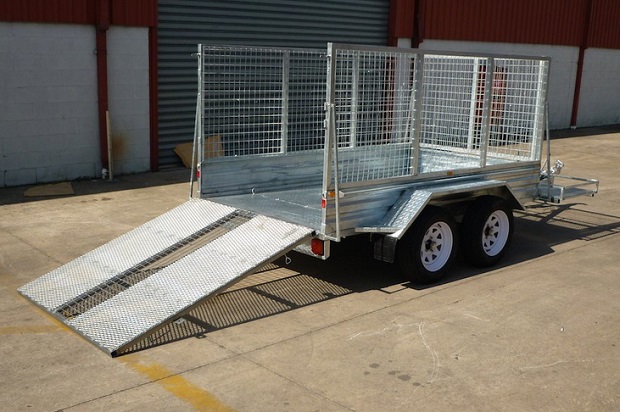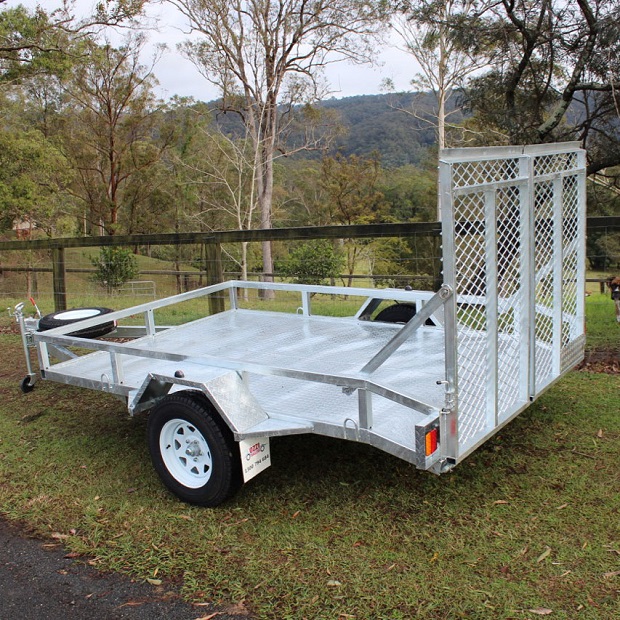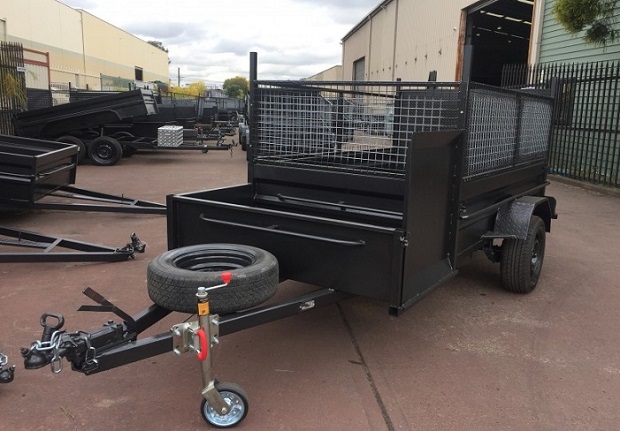Trailers: Transport Farming and Warehouse Equipment With Ease
The right machinery is important for accomplishing a variety of heavy-duty tasks from warehouse work to farm chores. When it comes to portability though, these machines have their limitations since they are heavy.
By using the right trailer, you can move your machines easily wherever they’re most needed. Machinery trailers can be very different, however, they are all based on the universal utility trailer, upgraded with a ramp and gear to secure the load and with features that suit a specific kind of machine.
Mower Trailers – Essential for People in the Farming or Landscaping Business
This is a fairly common need, especially for those involved in farming and landscaping. Taking a mower along is also required if you have a property that is some distance from your permanent residence. The many purpose-built mower trailers on the market are great for this.
Unlike a universal trailer, they have aluminium ramps or heavy-duty drop ramps created to make the loading and unloading as easy as possible. Depending on the exact measurements, mower trailers can even take more than one piece of equipment. So, you can load your push mower or ride-on mower as well as collect all the biomass and transport it away from the site.
We have a fairly sized market for this sort of equipment here in Australia. You can take advantage of the circumstances to design and order your custom configuration of a trailer.
The most usual type of trailer for moving mowers is the caged variety. It comes with a drop ramp at the back and a hot-dip galvanised frame to make it long-lasting. But you can add other useful features too.
Some prefer having a fully enclosed trailer with barn doors to make sure straw bales used for construction remain dry. Closed trailers are particularly handy for those that use ride-on mowers on a daily basis – they eliminate the need for unloading the machine into your shed at the end of the workday.
A heavily customised trailer can make for convenient and secure transport of small farm machinery. One can add many useful features to the trailer: jerrycan holders, spare wheel, toolboxes, drawbars, canopies, side steps – you name it.
These can also help secure the cargo. The most basic way to secure a mower during transport is to use ratchet straps to secure it to the corners of the trailer. Make sure the tension is equal because driving will cause a lot of vibration. Two additional straps to the front and the rear are optional.
How to Move a Scissor Lift with a Trailer
In some instances, scissor lifts don’t leave the warehouse for years on end. However, some blokes do maintenance work in an urban setting regularly. Setting up urban equipment, wiring or electric systems is often done at or above ceiling level. You might find yourself renting, buying or selling a scissor lift and transport can drive costs up.
These are just some of the scenarios in which you need to move a scissor lift in a trailer. And the most convenient way to do it would be to use a large universal trailer upgraded with a ramp. You can put your mower trailer to work as well – if you apply the appropriate precautions and secure the scissor lift. The only consideration of significance would be the actual size of the lift.
They can be heftier than your usual ride on mower so first run calculation as to the capacity of the trailer to take such beast. It’s not just the carrying capacity either. Heavy scissor lifts have to be secured with chains, nylon straps and come-along. If your trailer doesn’t have any of these, then you might need an upgrade or a new trailer altogether. Other than that, it’s practically the same – you need at least four anchor points to secure the machine once loaded onto the trailer.
What You Need to Know to Get a Forklift Across Safely
You already know that forklifts come with a variety of engine types that make them quite powerful machines, however, this often translates into more complex issues during transport. And you need to do some extra work apart from the obvious weight measurements.
Preparation of the forklift is paramount for safe transport with a trailer. For starters, the forks have to be lowered to the lowest possible position and to face forward. The best way to do this is to climb the trailer ramp in reverse gear.
Once there you need to make sure the fuel supply is shut off. Any splash of diesel during transit is a safety hazard you don’t want on your hands. If the forklift is fueled by batteries, disconnect them before transport. It helps prevent arching and it stops the engine of the machine from starting during transit.
We touched upon securing the machine to four anchor points. What is unique to transporting forklifts on a trailer though is the fact you need to choke the wheels. Placing wooden blocks in front of and behind the wheels is not enough, you need to fasten them to the trailer tray with screws.
Get the Trailer You Really Need
You can easily customise your trailer these days. So instead of going for what the market already has, you can go for the trailer you need. Australian trailer makers allow for a wide array of customisation options to choose from. Capacity alone goes from 750kg GVM to 4000kg GVM. Not to mention all of the contraptions you can add to make your trailer most suitable for the transportation of your equipment.


